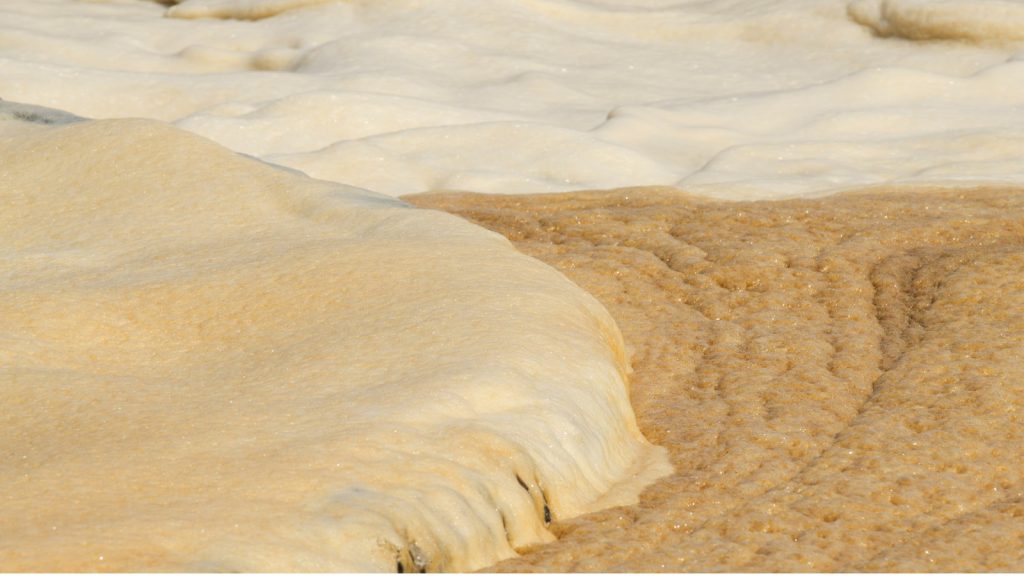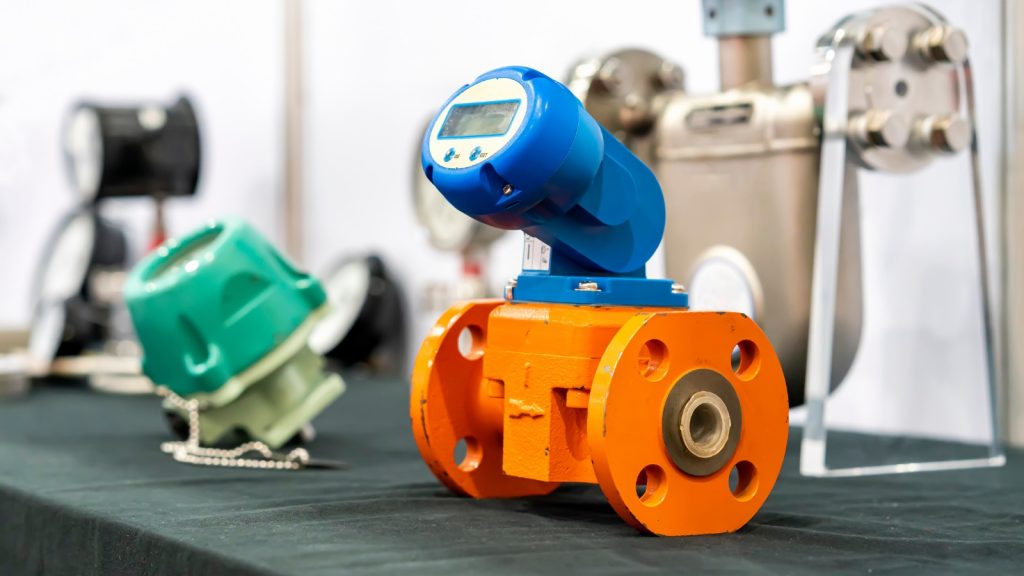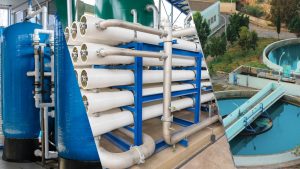Did you know that the wastewater treatment process consists of many sub-processes throughout its journey, from gathering to treating? One of them is the ‘Return Activated Sludge Process’ or RAS in short. Why should we go through this when it comes to wastewater treatment? The answer is simple! It is followed by several benefits to the whole treatment operation flow, including maintaining adequate microorganisms, adjusting hydraulic detention time, etc. Considering all the benefits of RAS, the wastewater treatment authorities should give priority to it and find new methods to optimise it.
In this article, we will be exploring what RAS is in the wastewater industry and how to optimise this process using various techniques.
In this article, we will be exploring what RAS is in the wastewater industry and how to optimise this process using various techniques.
Exploring the Return-Activated Sludge Process

- RAS flow is an essential aspect of the activated sludge process, a widely used method for treating municipal and industrial wastewater in Australia.
- Activated sludge, just a portion of the cleaned and cleared wastewater, is put back into the aeration tank using this technique. Bringing back microbially rich sludge improves the biological treatment process by giving the organic pollutants’ breakdown agents a concentrated source of microorganisms.
- Now let us elaborate on this more deeply. The activated sludge contains bacteria and other microorganisms inside it. They actively consume and metabolise organic matter in the wastewater, promoting effective nutrient removal.
- Now you may understand the importance of the latter. If we elaborate on this a bit more, the RAS process contributes to the overall efficiency of the treatment plant, ensuring the continuous and optimised removal of contaminants from wastewater. This ultimately produces environmentally safe waste for discharge or reuse.
- You should know that several factors can impact the RAS flow in a wastewater treatment plant. If you do not have a proper idea about this, the RAS process will be wasted.
- Therefore, it is important to understand these factors and how to control them to optimise RAS flow and maintain the treatment plant’s performance, which is exactly what we focus on in the next section of this article.
Top 5 Strategies to Optimise Return Activated Sludge Process in the Wastewater Industry

Flow Rate Control
This plays an important role in optimising the RAS process in the wastewater industry. Now we will understand the true meaning of this process. This means the operators can maintain ideal microbial concentrations for effective organic material degradation by carefully controlling the flow of activated sludge back to the aeration tank. As you can see here, taking control is everything.
If you need to avoid overloading or underutilisation, precise management makes sure that the proper quantity of biomass is reintroduced. The best benefit of this step is that overall treatment performance and nutrient elimination are increased as a result of this optimisation. As another plus point, it also increases the biological treatment’s efficiency.
It is quite visible that flow rate control maintains a stable environment for microbial activity by allowing adaptation to changing wastewater circumstances. In the end, this analytical method of flow management ensures the RAS process’s ongoing efficiency and effectiveness in treating wastewater. On the other hand, it will provide a pillar to strengthen the strict environmental regulations in Australia and reduce operating expenses by more than 60%.
If you need to avoid overloading or underutilisation, precise management makes sure that the proper quantity of biomass is reintroduced. The best benefit of this step is that overall treatment performance and nutrient elimination are increased as a result of this optimisation. As another plus point, it also increases the biological treatment’s efficiency.
It is quite visible that flow rate control maintains a stable environment for microbial activity by allowing adaptation to changing wastewater circumstances. In the end, this analytical method of flow management ensures the RAS process’s ongoing efficiency and effectiveness in treating wastewater. On the other hand, it will provide a pillar to strengthen the strict environmental regulations in Australia and reduce operating expenses by more than 60%.
Sludge Wasting
Another strategic routine is sludge wasting, which is a critical optimisation approach in the Return Activated Sludge process within the Australian wastewater industry.
If you think it is a complex thing, let us put it this way. As its name suggests, the sludge-wasting process carefully eliminates extra activated sludge from the treatment system. This technique helps to maintain a balanced microbial population and avoid the buildup of inert compounds.
Operators can maintain an ideal sludge condition and ensure that microorganisms are at their peak for the breakdown of organic materials by carefully wasting sludge. This procedure not only keeps the treatment system from being overloaded but also improves the sludge-settling qualities.
As a result, better settling encourages effective treated water separation from the sludge. It helps improve the overall stability and performance of the RAS process. Plus, this improves the removal of nutrients and the effectiveness of wastewater treatment.
If you think it is a complex thing, let us put it this way. As its name suggests, the sludge-wasting process carefully eliminates extra activated sludge from the treatment system. This technique helps to maintain a balanced microbial population and avoid the buildup of inert compounds.
Operators can maintain an ideal sludge condition and ensure that microorganisms are at their peak for the breakdown of organic materials by carefully wasting sludge. This procedure not only keeps the treatment system from being overloaded but also improves the sludge-settling qualities.
As a result, better settling encourages effective treated water separation from the sludge. It helps improve the overall stability and performance of the RAS process. Plus, this improves the removal of nutrients and the effectiveness of wastewater treatment.
Adjusting Aeration Rate
When it comes to wastewater sludge, taking control of it and making adjustments as necessary receive equal importance.
Fine-tuning the aeration rate is a strategic optimisation approach in the RAS process of the wastewater industry. This is done by adjusting the amount of air introduced into the aeration tank, and the operators can precisely control the dissolved oxygen levels important for microbial activity.
This optimisation ensures an ideal environment for the microbial community responsible for organic matter degradation, promoting enhanced biological treatment efficiency. Aeration rates can be carefully managed to improve the settle-ability quality of activated sludge and avoid fungal growth, which affects the settling properties of the sludge.
This sophisticated management minimises energy usage while optimising nutrient removal, which lowers operating costs. Also, varying aeration rates allow for changes in wastewater properties, providing flexibility in response to changing wastewater conditions. In the end, this results in a more resilient and long-lasting RAS process in wastewater treatment facilities.
Fine-tuning the aeration rate is a strategic optimisation approach in the RAS process of the wastewater industry. This is done by adjusting the amount of air introduced into the aeration tank, and the operators can precisely control the dissolved oxygen levels important for microbial activity.
This optimisation ensures an ideal environment for the microbial community responsible for organic matter degradation, promoting enhanced biological treatment efficiency. Aeration rates can be carefully managed to improve the settle-ability quality of activated sludge and avoid fungal growth, which affects the settling properties of the sludge.
This sophisticated management minimises energy usage while optimising nutrient removal, which lowers operating costs. Also, varying aeration rates allow for changes in wastewater properties, providing flexibility in response to changing wastewater conditions. In the end, this results in a more resilient and long-lasting RAS process in wastewater treatment facilities.
Adjusting Mixing Intensity
You can affect the spread of microorganisms and help with effective organic material breakdown by accurately adjusting the mixing energy in the aeration tank.
Fine-tuning mixing intensity enhances the contact between bacteria and wastewater constituents, encouraging optimal nutrient uptake and metabolite production. This regulation offers a uniform environment for microbial growth while reducing concerns such as sludge settling.
Also, maintaining the strength of the mixing helps to keep the tank’s conditions consistent and helps avoid dead zones. This subtle control encourages economical wastewater management by reducing energy use and raising overall treatment efficiency.
RAS processes in wastewater treatment facilities are strong and resilient because of the flexibility provided by altering mixing intensity, which addresses shifts in wastewater characteristics.
Fine-tuning mixing intensity enhances the contact between bacteria and wastewater constituents, encouraging optimal nutrient uptake and metabolite production. This regulation offers a uniform environment for microbial growth while reducing concerns such as sludge settling.
Also, maintaining the strength of the mixing helps to keep the tank’s conditions consistent and helps avoid dead zones. This subtle control encourages economical wastewater management by reducing energy use and raising overall treatment efficiency.
RAS processes in wastewater treatment facilities are strong and resilient because of the flexibility provided by altering mixing intensity, which addresses shifts in wastewater characteristics.
Water Renewal
The latter is another key optimisation strategy in the RAS process within the wastewater industry, which offers a powerful advantage, for sure. When carefully adding fresh water to the activated sludge system, this procedure encourages the reduced concentration of chemicals that limit microbial activity and maintains ideal circumstances for it.
As you can renew the water in the system, you can effectively mitigate the effects of accumulated salts, toxic compounds, and other inhibitors accurately. This effort ensures a conducive environment for microbial growth and organic matter degradation. On the other hand, strategies like water renewal also aid in controlling the concentration of nutrients, preventing potential imbalances that could restrict the overall treatment efficiency.
This strategic approach optimises the RAS process by supporting a healthier microbial community in the end. It goes without saying that this helps minimise the risk of process upsets and enhance the system’s resilience to varying influential conditions.
As you can renew the water in the system, you can effectively mitigate the effects of accumulated salts, toxic compounds, and other inhibitors accurately. This effort ensures a conducive environment for microbial growth and organic matter degradation. On the other hand, strategies like water renewal also aid in controlling the concentration of nutrients, preventing potential imbalances that could restrict the overall treatment efficiency.
This strategic approach optimises the RAS process by supporting a healthier microbial community in the end. It goes without saying that this helps minimise the risk of process upsets and enhance the system’s resilience to varying influential conditions.
Smooth Wastewater Operation with the Right RAS Strategies

Australia puts more weight on water recycling initiatives such as wastewater treatment in order to reduce the risks of water shortages. As you have gone through this whole article, you may understand how important it is to maintain the water quality up to the expected standards while engaging in wastewater treatment efforts. It is always better to reduce human errors through a strategic approach, like implementing suitable technology for such complex and chemically involved tasks. If you hold hands with an industry expert, most of your worries will fade away in the future.







